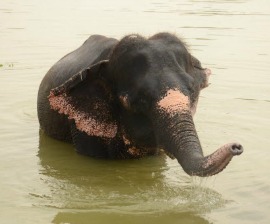-

Frank Loftus/HSI
Vilifying wild animals in episodes of human-wildlife conflict in India can lead to widespread outrage against the entire species in form of retaliatory killings. Humane Society International/India has written to the Ministry of Information and Broadcasting asking them to develop a protocol for news reporting of human-wildlife conflict across the county.
Many recent news reports on human-wildlife conflict misinform the public about the underlying causes of those conflicts. These reports typically position humans as victims while ignoring the plight of the animals involved. They don’t tell the complete story of the complexity of the issue. For instance, that loss of habitat and competition for waning resources has led to increased incidences of encounters between wild animals and human populations. Or that human-wildlife conflict mitigation tools exist, in the form of special fencing, trained wildlife officers and public education on what to do when encountering a wild animal. At worst, news reports can incite violence against wild animals, including stoning and burning.
On electronic media, videos of animals in conflict often have jarring, violent music in the background with visual effects to portray the animal as a villain when in reality the animal is reacting in panic to being surrounded by an unruly mob. A survey conducted by Wildlife Conservation Society-India found that people associated elephants with “menace”, leopards and tigers with “attack” and bears with “mauling.” Such perception, especially combined with lack of effective wildlife management strategies at a state and central level, can prove detrimental to the cause of wildlife conservation and peaceful co-existence between humans and wildlife.
N.G Jayasimha, managing director, HSI/India, said: “It is incredible how the media plays up every incident of conflict, without paying heed to the bigger impact it is making on the wildlife and the people who are living in those areas. Indian news media typically present animals as a threat and use provocative headlines to increase eyeballs and ratings. It is unfortunate that the channels do not understand the repercussions of their stories and how they harm wildlife. The ministry needs to develop guidelines for the news media to follow so that there is ethical reporting before more damage is done.”
Additionally, HSI/India has reached out to the West Bengal government to create a protocol on crowd-control in areas affected with human-wildlife conflict. The letter shares both ideas on how to seamlessly work to mitigate conflict situations, along with an offer to conduct training programs for district level officers.
Media Contact: Vidhi Malla, vmalla@hsi.org, 9560103078
